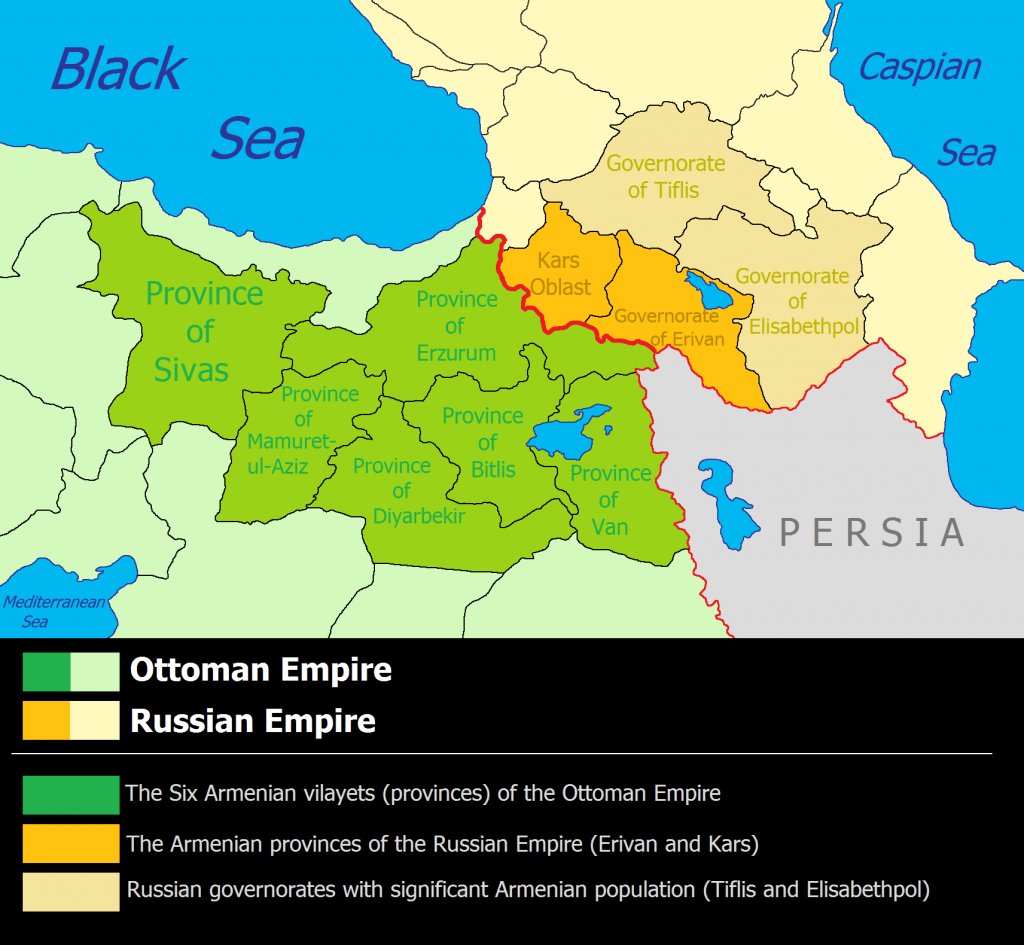Context:
- U.S. President recognised the 1915 killings of Armenians by Ottoman forces as genocide in a historic moment, defying decades of pressure by Turkey.
- The statement is a massive victory for Armenia and its extensive diaspora.
- Starting with Uruguay in 1965, nations including France, Germany, Canada and Russia have recognised the genocide but a U.S. statement has been a paramount goal that proved elusive under other presidents until Mr. Biden.
Relevance:
GS-I: History (World History), GS-II: International Relations (Foreign policies affecting India’s Interests)
Dimensions of the Article:
- About the Armenian Genocide
- Why Armenians were targeted?
- Was anyone held responsible?
- What’s Turkey’s response?
About the Armenian Genocide
- Up to 1.5 million Armenians are estimated to have been killed in the early stage of the First World War within the territories of the Ottoman Empire.
- Armenians were largely living in the eastern fringes of the Empire.
- The Ottoman Turks unleashed Turkish and Kurdish militias upon them, killing and pillaging tens of thousands. Hundreds of thousands of Armenians were deported from eastern Anatolia (today’s Turkey) to concentration camps in the Syrian steppe. Most of the deaths occurred during this flight.

Was it a genocide?
- According to Article II of the UN Convention on Genocide of December 1948, genocide has been described as carrying out acts intended “to destroy, in whole or in part, a national, ethnic, racial or religious group”.
- Before the First World War broke out in 1914, there were 2 million Armenians in the Ottoman Empire.
- According to a study, in 1922, four years after the War, the Armenian population in the region was about 400 thousand. This has led historians to believe that up to 1.5 million Armenians were killed during the course of the War.
Why Armenians were targeted?
- In a way, the Armenians were victims of the great power contests of the late 19th and early 20th centuries.
- When the Ottoman Empire was in decline on its fringes by the last quarter of the 19th century, Armenians were seen by the rulers in Constantinople as a fifth column.
- The resentment started building up after the Russo-Turkish war of 1877-78 in which the Turks lost territories.
- In the Treaty of Berlin, big powers dictated terms to the Ottomans, including putting pressure on Sultan Abdülhamid II to initiate reforms “in the provinces inhabited by Armenians, and to guarantee their security against the Circassians and Kurds.”
- The Sultan saw this as a sign of strengthening ties between the Armenians and other rival countries, especially Russia.
- Post the treaty, there were a series of attacks on Armenians by Turkish and Kurdish militias. In 1908, the Young Turks wrested control from the Sultan and promised to restore imperial glory and under them the empire became more and “Turkik” and persecution against the ethnic minorities picked up.
- In October 1914, Turkey joined the First World War on the side of Germany. In the Caucasus, they fought the Russians, their primary geopolitical rival. But the Ottomans suffered a catastrophic defeat in the Battle of Sarikamish by the Russians in January 1915. The Turks blamed the defeat on Armenian “treachery”. First, Armenians in the Ottoman Army were executed.
- On April 24 (now known as the Remembrance Day) the Ottoman government arrested about 250 Armenian intellectuals and community leaders and most of them were later executed.
- The Ottoman government passed legislation to deport anyone who is a security risk – fearing that Armenians in eastern Anatolia would join the Russians if they advanced into Ottoman territories. Then they moved Armenians, including children, en masse to the Syrian Desert. That was a march of death.
Was anyone held responsible?
- After the fall of the empire, many Ottoman officials, including a governor in Anatolia, were tried and executed for the atrocities committed against Armenians.
- But the Three Pashas fled the country and took refuge in Germany. They were sentenced to death in absentia.
- In 1921, Talat Pasha, the Grand Vizier and the key architect of the atrocities, was assassinated on the street of Berlin by Armenian student Soghomon Tehlirian.
What’s Turkey’s response?
- Turkey has acknowledged that atrocities were committed against Armenians, but denies it was a genocide (which comes with legal implications) and challenges the estimates that 1.5 million were killed.
- The Turkish Foreign Ministry has issued a strong statement to Mr. Biden’s announcement saying it doesn’t not have “a scholarly and legal basis, nor is it supported by any evidence”.
-Source: The Hindu





